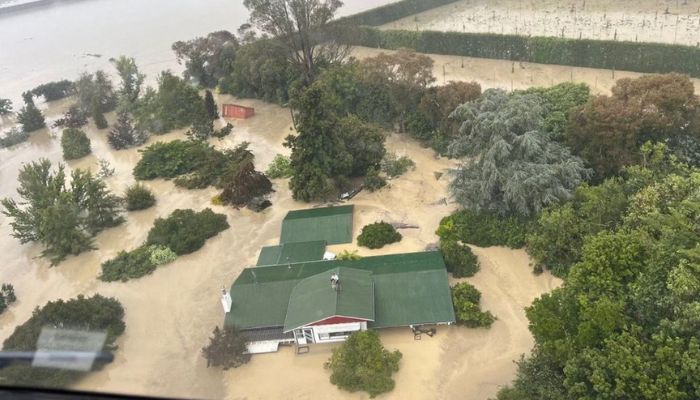
WELLINGTON: Cyclone Gabrielle weakened and moved away from New Zealand on Wednesday as the country started to assess the damage caused by significant flooding, landslides and high winds that left four people dead and displaced thousands from their homes.
Gabrielle, which reached New Zealand on Sunday before making its way down the east coast of the North Island, cut off entire towns, washed away farms, bridges and livestock, and inundated homes, stranding people on rooftops.
“Our immediate focus has been undertaking lifesaving missions for those affected by the floods who needed to be rescued,” said Prime Minister Chris Hipkins on Wednesday at a televised media briefing, adding that all people stranded on roofs by floodwaters have been rescued.
“Please don’t return to your homes until you have been given the all-clear to do so,” he said, warning that the situation remains dangerous even as the weather improves.
Residents in hard-hit areas are now being asked to conserve water and food because of fears of shortages after the cyclone forced New Zealand on Tuesday to declare a national state of emergency for only the third time in its history.
Hipkins confirmed on Wednesday four people had died including a volunteer firefighter who responded to a call out and was caught in a landslide on Monday.
With around 1,400 people unaccounted for since the cyclone crisis began, Hipkins said roughly 1,100 have been reported found and there is likely to be a considerable crossover between the two lists.
However, he added that police hold “grave concerns” for several missing people.
Parts of New Zealand’s North Island, where about 75% of the country’s 5 million residents live, are enduring their second major storm in as many weeks. Record rains last month triggered flash floods in Auckland and four people lost their lives then.
Authorities estimate more than 9,000 people have been displaced so far, with around 3,000 housed in temporary shelters.
Defence has deployed over 700 personnel along with four aircraft, seven helicopters and two naval ships to help rescue those stranded by the floods and deliver essential supplies to isolated towns, Hipkins said.
Alysha Haidekker was back assessing the flood damage at her home in badly hit Hawke’s Bay on Wednesday. The water has drained away but it has left silt, swollen-wood and damaged her new kitchen, wall linings and doors.
She said they’d managed to move a lot of their belongings to an upper storey but the flooding happened fast.
“The water was coming in the door and I panicked and tried to get a towel but by the time I turned around I could tell a towel was not going help,” she said. “It had just started seeping in from every corner.”
Evacuations continue
Meteorological service WeatherWatch said Cyclone Gabrielle is now east of the country and continuing to track away from the North Island with the weather now improving.
Both domestic and international flights have resumed though airline schedules may be disrupted for several days, Auckland Airport said in a tweet on Wednesday morning. Napier Port will be closed until Thursday.
However, rivers in Hawke’s Bay continue to pose risks and the local emergency management ordered further evacuations early on Wednesday. Electricity is out for around 160,000 customers across the island, down from the peak of 225,000 on Tuesday. Authorities expect that number to improve again on Thursday.
Magnitude 6.1 quake
A magnitude 6.1 earthquake struck near Wellington on Wednesday at a depth of 48km, government seismic monitor Geonet said.
The earthquake’s epicentre was 50km from the town of Paraparaumu, according to Geonet.
A Reuters witness felt a strong shaking that lasted several seconds in the capital of Wellington.
New Zealand lies on the seismically active “Ring of Fire”, a 40,000km arc of volcanoes and ocean trenches girdling much of the Pacific Ocean.